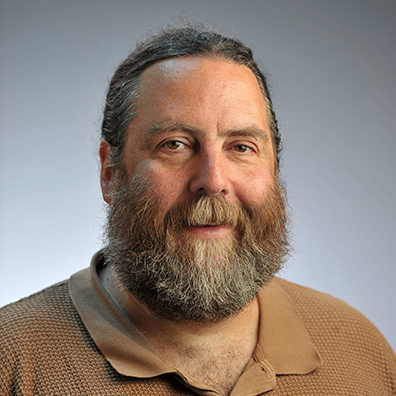Matthew J. Ravosa

Professor, Department of Biological Sciences
Phone: 574-631-2556
Office: 221 Galvin Life Sciences Center
Over the past three decades, my integrative research program has investigated major adaptive and structural transformations in mammalian musculoskeletal form during growth and across major clades. With an eye to both the evolutionary and translational implications, our lab has investigated the plasticity, mechanobiology, ecomorphology, aging and performance of the vertebrate musculoskeletal system. Work on development, biomechanics and evolution has marshaled diverse and non-traditional sources of evidence to address the complex underpinnings of patterns of phenotypic variation. We have employed of a broad range of modern cell biological, molecular, engineering and imaging techniques (microCT, immunostaining, histomorphometry, tissue properties testing, microarray, tissue culture, PCR), typically via recourse to unique experimental and transgenic animal models. For instance, as the adaptive responses of bone are hierarchical in nature, varying in terms of bone quantity and bone quality, one must employ a multilevel perspective to detect the architectural correlates of skeletal function.
We have developed a rabbit model of long-term dietary plasticity in craniofacial hard- and soft-tissues, which is being coupled with data on load-induced changes in gene expression patterns of jaw-joint cartilage as well as corresponding nanoscale tests of tissue properties. This evidence is being integrated with in vivo data regarding the relationship between seasonal variation in food mechanical properties and masticatory behavior. We have recently received funding to also explore how variation in daily patterns of feeding activity affects connective-tissue responses in the oral cavity. Such research contributes to ongoing debate regarding the ecomorphological underpinnings of dietary seasonal variability in cranial evolution among fossil and living organisms. These first-ever long-term plasticity studies have applied a more naturalistic and integrative perspective to the function and performance of multiple craniomandibular and limb joints. Moreover, elucidation of musculoskeletal responses to variation in the temporal modality of loading patterns is also critical for tissue growth and maintenance after surgical intervention, and for developing therapies to counter osteoporotic bone loss.
Our lab is also developing the first mouse model of cranial osteoblast and dura mater differentiation, which has important implications for understanding bone formation during prenatal development, skull pathologies and the evolution of the remarkably large brain in humans. These analyses of the mechanobiology of craniofacial osteoblasts aim to evaluate the role(s) of embryological precursor origin, ossification mode and loading environment on connective-tissue formation. Ongoing macroscale tests of the properties and biomechanics of an ossified mandibular symphysis, a jaw-joint feature characteristic of modern higher primates such as humans, has capitalized on various analytical and technical methods common to engineering. Investigation of the dynamic links among skeletal safety factors, masticatory stresses and cortical bone formation has highlighted fundamental similarities and differences in loading patterns between the skull and limbs. From a clinical and bioengineering standpoint, such information is important for characterizing strain-mediated responses necessary for mimicking the natural growth activity of connective tissues. Finally, we are developing a rabbit model of osteonecrosis of the jaw, a debilitating oral disease associated with long-term bisphosphonate therapy used in treating bone metastases and osteoporosis in a human clinical context.
Would you like to support Prof. Ravosa's Research?